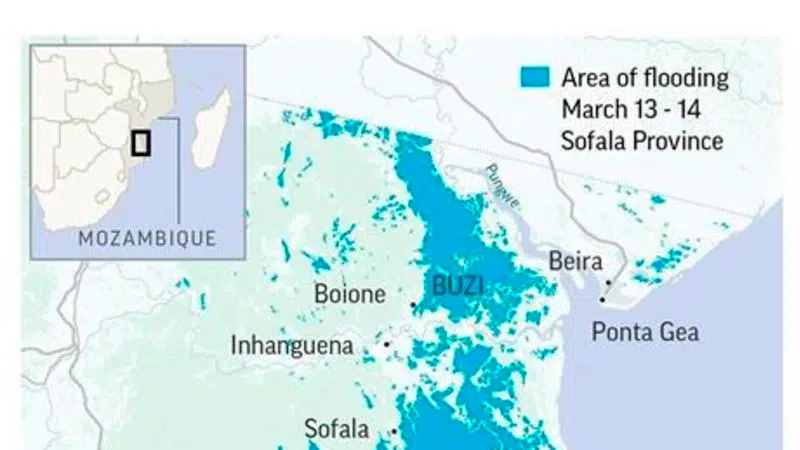
‘There is death all over’: Cyclone Idai toll rises above 300
CHIMANIMANI, Zimbabwe — Mozambique began three days of national mourning on Wednesday for more than 200 victims of Cyclone Idai, while the death toll in neighbouring Zimbabwe rose to more than 100 from one of the most destructive storms to strike southern Africa in decades.
Torrential rains were expected to continue into Thursday and floodwaters were still rising, according to aid groups trying to get food, water and clothing to desperate survivors. It will be days before Mozambique’s inundated plains drain toward the Indian Ocean and even longer before the full scale of the devastation is known.
People have been clinging to trees and huddling on rooftops since the cyclone roared in over the weekend, and aid groups were desperately trying to rescue as many as they can. The United Nations humanitarian office said the town of Buzi, with some 200,000 people, was at risk of becoming at least partially submerged.


